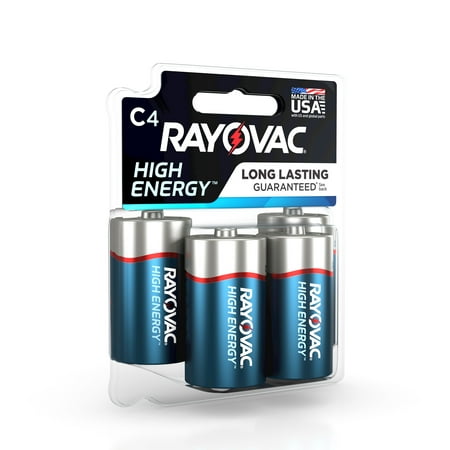Rayovac High Energy Alkaline, C Batteries, 4 Count
These C Alkaline Batteries are ideal for high use devices including toys, flashlights, stereos and more. Plus, they?re designed to prevent damaging battery leaks and tested twice prior to shipment to ensure reliability. Rayovac High Energy C Alkaline Batteries are long lasting, guaranteed ? plain and simple or your money back*. *Money Back Performance Guarantee: Visit www.RAYOVAC.com/MBG for details.












Reviews
There are no reviews yet.